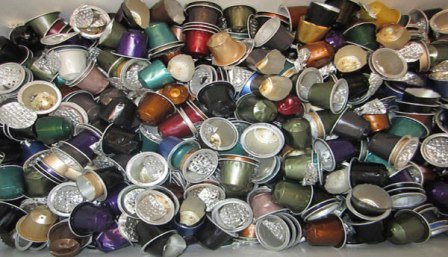They’re everywhere – those seductive little plastic capsules that make it so easy to get a fresh-tasting cup of Joe exactly the way you like it every time. Millions of coffee lovers wonder how they ever got by without them. Even if you are having the best espresso machine, you do have to spare some time for coffee preparation and are going to create some mess. With Keurig coffee makers, many things wind up and you are given a cup of coffee in no time and no mess.

The Environmental Impact
The problem with Keurig machines is what to do with those plastic pods after you use them. Even if we are using alternate brands for cheaper k-cups, this is the major issue. Recycling K-cups has been difficult for a couple of reasons. First of all, the composition of the plastic itself is hard to break down and put to new uses, making it difficult product to sell to recycling companies. Secondly, the cups are so small that the sorting equipment at recycling facilities is unable to sense them. The result is that most of the used K-cups end up in landfills even when consumers try to recycle.

Change Is In the Air
According to Keurig Green Mountain, all of that is set to change by 2020. The company is changing the composition of the cups from polystyrene to polypropylene, making them more attractive to recyclers.
At the same time, a large number of recycling companies across North America are investing in new technology that does a better job of capturing and recycling K-cups and other small items. This is a move that will have benefits beyond the coffee industry.
Together, these two changes mean that you will soon be able to peel and toss your K-cups into the recycling bin, just as you do now with empty yogurt containers.
Public Pressure
Keurig has faced a lot of criticism over the years for its environmentally unfriendly practices. The city of Hamburg, Germany, went as far as to ban coffee capsules in all government buildings. Even John Sylvan, the inventor of the Keurig brewing system, has gone on the record expressing regret for the environmental impact of his invention. Consumers and shareholders alike have been pressuring the company to address this problem.
To be fair, Keurig has been working on this problem for a decade. In 2006, Green Mountain, a Vermont-based company with a long-standing commitment to good environmental practice, acquired Keurig. It has taken several years to find a plastic formula that performs well in the Keurig brewing system. By 2018, all Canadian and about half of all American K-cups will use the new plastic, and by 2020 the transition to polypropylene will be complete.
If consumers make the effort to recycle K-cups (and it is an effort to get that foil off the capsule) and if the upgrades to recycling facilities are successful when it comes to capturing small items, the impact of this change will be significant.
Is It Enough?
Some critics point out that even with 100-percent recycling the Keurig brewing system is a highly wasteful way to make coffee. While capsules waste less coffee and water than traditional brewing methods, they also consume far more resources and energy in their packaging. The best way to make an environmental impact is to reduce and reuse packaging. Recycling is much better than simply throwing the capsules away, but it’s still far from ideal.
The Bottom Line
If you’re looking for the most environmentally-friendly way to make single servings of coffee, Keurig isn’t it, even with recyclable capsules. But Keurig and other capsule coffees became popular for a reason: they’re the easiest way to provide a variety of different coffees, keep them fresh for a long time, and brew them to perfection consistently. If you’re hooked on your Keurig and don’t want to give it up, the fact that you can now recycle K-cups easily is great news.
This is a big step forward for Keurig, and clearly, it wasn’t easy. Let’s hope the company continues to make strides towards reducing its environmental impact.


